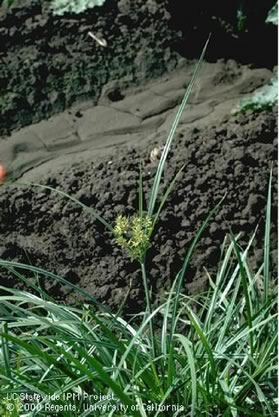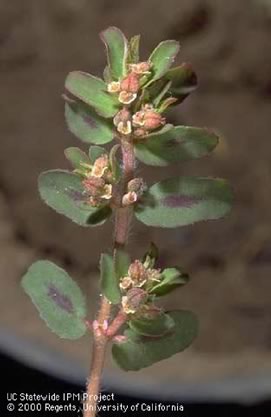|
Types of Weeds
Weed species are either broadleaf or grassy type. A few examples of broadleaf weeds are clover, dandelion, and purslane. Some examples of grassy type weeds are nutsedge, pampas grass, and bermuda grass. Weeds can be further divided into annuals, biennials, and perennials.
 |
| Common Purslane |
Annuals complete their life cycle in one year. Summer annuals, such as crabgrass, germinate in the spring and die in the fall with the onset of colder weather. The seeds they produce during the growing season remain in the soil over the winter and germinate the following spring when soil temperatures rise. A single plant may yield more than 10,000 seeds. Many weed seeds remain viable for 20-70 years.
Biennials such as cheese weed (broadleaf) live for two years.
Perennial weeds live longer than two years. Simple perennials reproduce by seed. Common examples are dandelions, plantains, and chicory. Creeping perennials reproduce by seed, but can also spread by rhizomes, stolons, and underground storage organs such as bulblets. Examples are nutsedge, oxalis, bermuda grass, and kikuyu grass.
 |
| Bermuda Grass |
Common bermuda grass, yellow nutsedge, and some other perennial weeds are most effectively controlled with a systemic herbicide that is applied before the soil is dug and when weeds are actively growing. Always contact the pest control department for your school district if you think herbicide treatment may be needed.
 |
|
 |
| Yellow Nutsedge |
|
Spotted Spurge |

|



